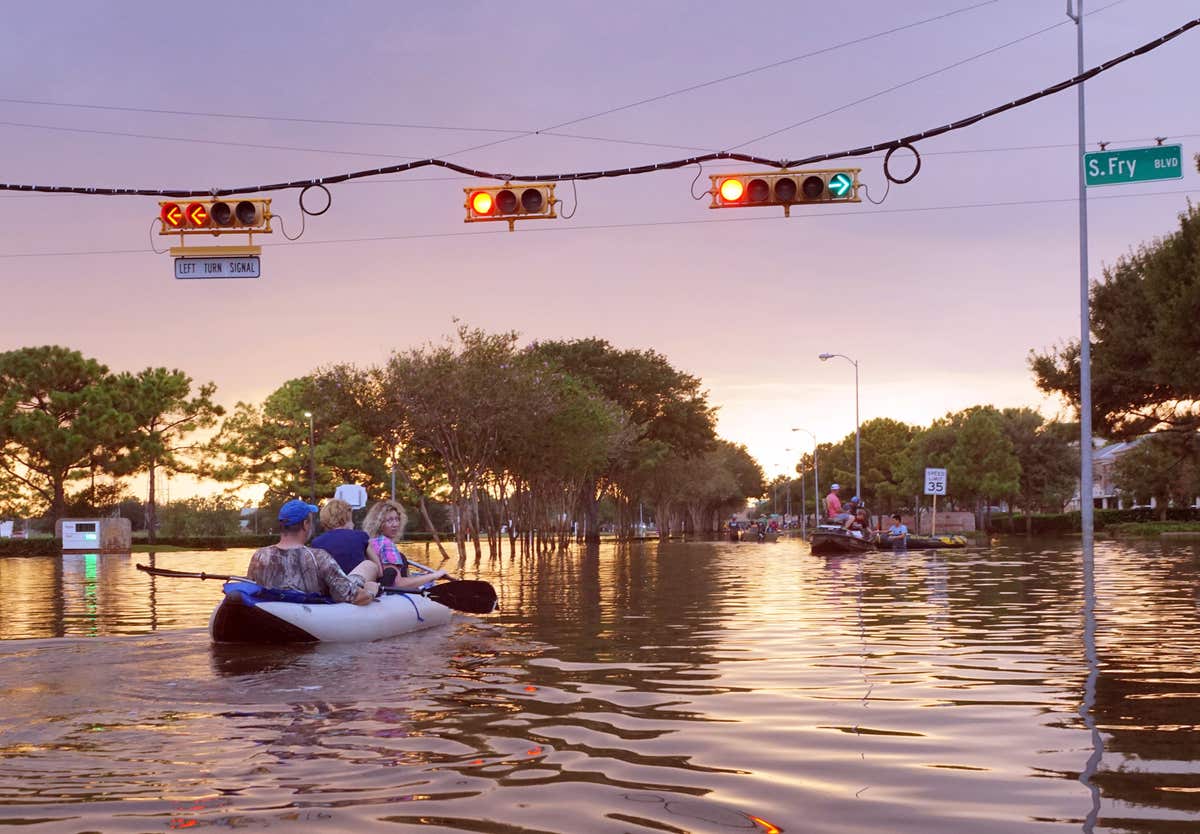There’s no question that floods are becoming more common and that they bring dangerous conditions and costly damage. Knowing what to do before the waters rise, when the flood is actually happening, and after everything is over is key to making sure your home and family are safe. If you live somewhere expecting a flood, here’s what you need to do.
How to prepare for a flood
Preparation is critical in any natural disaster. Often the steps you need to take come long before authorities issue any sort of warning. These include making a plan, protecting your home, creating an emergency kit, and getting flood insurance.
1. Make an emergency plan
In the event of an evacuation, you want to know where you will go and how you will get there. This means creating an emergency plan, and most importantly, sharing it with everyone in the family. Your emergency plan should address issues that may come up if you’re ordered to evacuate, such as where your family will meet if you’re not together during the evacuation.
You may want to designate someone outside of your area to whom you can check in to let people know you are safe and don’t need assistance. This person can also help your family reconnect if you get separated.
2. Prepare your home
In addition to making a plan, you can prepare your home so it has minimal damage after a flood. New homes built on a floodplain should be elevated to avoid water saturation. But if your home is already built, you can elevate utilities such as the furnace, water heater, and electric panel. You can also hire a plumber to install check valves that allow water to keep sewer water from backing up into your house.
Before a flood occurs, you might also want to:
- Buy sandbags or other home barriers and store in your garage.
- Install a water alarm.
- Get a battery-operated backup sump pump.
If a flood is imminent, you may also want to move your furniture and other valuables to a higher floor. Getting these items into your attic may minimize your overall damage. That said, only take these measures if you can do so safely.
3. Build an emergency kit
For floods, the first step is to put together an emergency kit. This is a grab-and-go bag rather than a shelter-in-place kit because of the chance that you may need to evacuate quickly.
A basic grab-and-go kit should have:
- Ready-to-eat, non-perishable food.
- Water.
- A battery-powered radio.
- A flashlight.
- Extra batteries.
- First aid kit.
- Personal medications.
- Emergency blanket.
- Whistle.
- Toothbrush, toothpaste, and other toiletries.
- Cash in small bills.
- Copy of important documents.
- N95 masks.
- Your emergency plan.
A shelter-in-place kit is fairly similar. The main difference is an emergency kit that stays in your home may have some additional items, like more water and seasonal clothes.
4. Get flood insurance
There’s no question that floods are becoming more common or that they bring dangerous conditions and costly damage. According to the Federal Emergency Management Agency (FEMA), even an inch of water can lead to $25,000 worth of flood damage.
While just about every homeowner has some flood risk, standard homeowners policies don’t cover it, and that makes flood insurance critical. Don’t get caught underinsured. Talk to us about your flood risk. We offer a flood insurance endorsement for as little as $175 per year so you can be fully protected.
How to stay safe during a flood
Emergency broadcast systems have gotten very good at making sure people have time to evacuate. However, that doesn’t mean you can’t end up in a situation where you have to make quick decisions to protect your home and your family.
1. Protect your home
If authorities have issued a flood warning, you can start protecting your home with barriers. Put sandbags where water might seep in, such as doors (particularly sliding glass doors) and garages. You may also want to put your belongings on top of counters or move them to upper floors. Also, bring outdoor furniture into the house so it doesn’t get swept away in the flood.
2. Protect your family
The most important thing here is to stay informed by listening to weather alerts on the news and to locate your emergency kit so you’re prepared to evacuate. If you are given an evacuation order, turn off the gas and electricity, grab your emergency kit, and leave.
Follow directions from the authorities as you evacuate, and do your best to:
- Avoid walking, swimming, or driving through floodwaters.
- Avoid bridges over fast-moving water.
- Stay in your car; only get on the roof if water is rapidly rising within it.
Even if you haven’t been ordered to evacuate, pay attention to the water sources around you, such as streams that can overflow with little warning. Flash floods happen quickly and don’t need rain clouds or heavy rain in the area of flooding – meaning they don’t always announce themselves ahead of time.
If water is already in your home, avoid touching electrical equipment as this can lead to electrocution. Should you find yourself surrounded by several feet of moving water, make your way to a higher floor as quickly and carefully as possible. Do not, however, go into your attic if there is no way out, and only go to the roof if you have no other choice.
How to stay safe after a flood
There are still dangers after the flood has receded. As much as possible, stay out of pools of water and mud. These may look safe, but water can be contaminated by oil, gasoline, or raw sewage. It can also be full of bacteria, and that can lead to serious health issues. Plus, moving water as shallow as six inches can sweep you off of your feet.
Six inches of water can also cause you to lose control of your car, and two feet can carry away most sport utility vehicles, so don’t drive through deep pools of water. You should also know that floods erode roadways and bridges, and this may cause them to collapse under the weight of a car.
Better yet? Stay off the streets as much as possible because disaster crews and emergency responders have to deal with the aftermath of the flood. If you must drive, keep to the middle of the road, the highest part, and follow all emergency signs.
Emergency authorities also recommend staying out of buildings that are surrounded by water because they can be dangerous. You don’t know what the water has done to the foundation and the building may collapse. It’s best to wait until the water subsides before re-entering.
Whatever you do, continue to listen to emergency alerts in case more flooding is on the way. Do not return to your home until the authorities tell you it is safe to do so.
Cleaning up after a flood
Experts recommend waiting for the water to go down before reentering your home. Once you can enter your home safely, make sure you have rubber boots, waterproof gloves, and an N95 mask to protect yourself. You should also turn off the electricity in your home if you weren’t able to prior to evacuating. But remember, don’t touch electric appliances if they are wet or if you’re standing in water.
Other important clean-up steps include:
- Checking for gas and water leaks. You’ll want to address these before anything else to prevent further damage.
- Drying out your house. Your goal is to dry out your home within 24 hours to prevent mold growth and to limit damage to walls, floors, and foundations. If there’s oil on the water, hire an environmental contractor to remove it before you pump out the water.
- Disinfecting your belongings. Remember that the water is likely contaminated so you need to sanitize any items you decide to keep.
This is also a good time to take pictures of the damage and contact your insurer to begin the claims process. They’ll send an insurance adjuster to assess your claim, but be patient as there may be many people needing help.
Devastating floods can happen in an instant, leaving you little time to get out safely. Preparation is the key to surviving while also minimizing damage to your property.
For more tips, check out 5 things to do after a flood.


